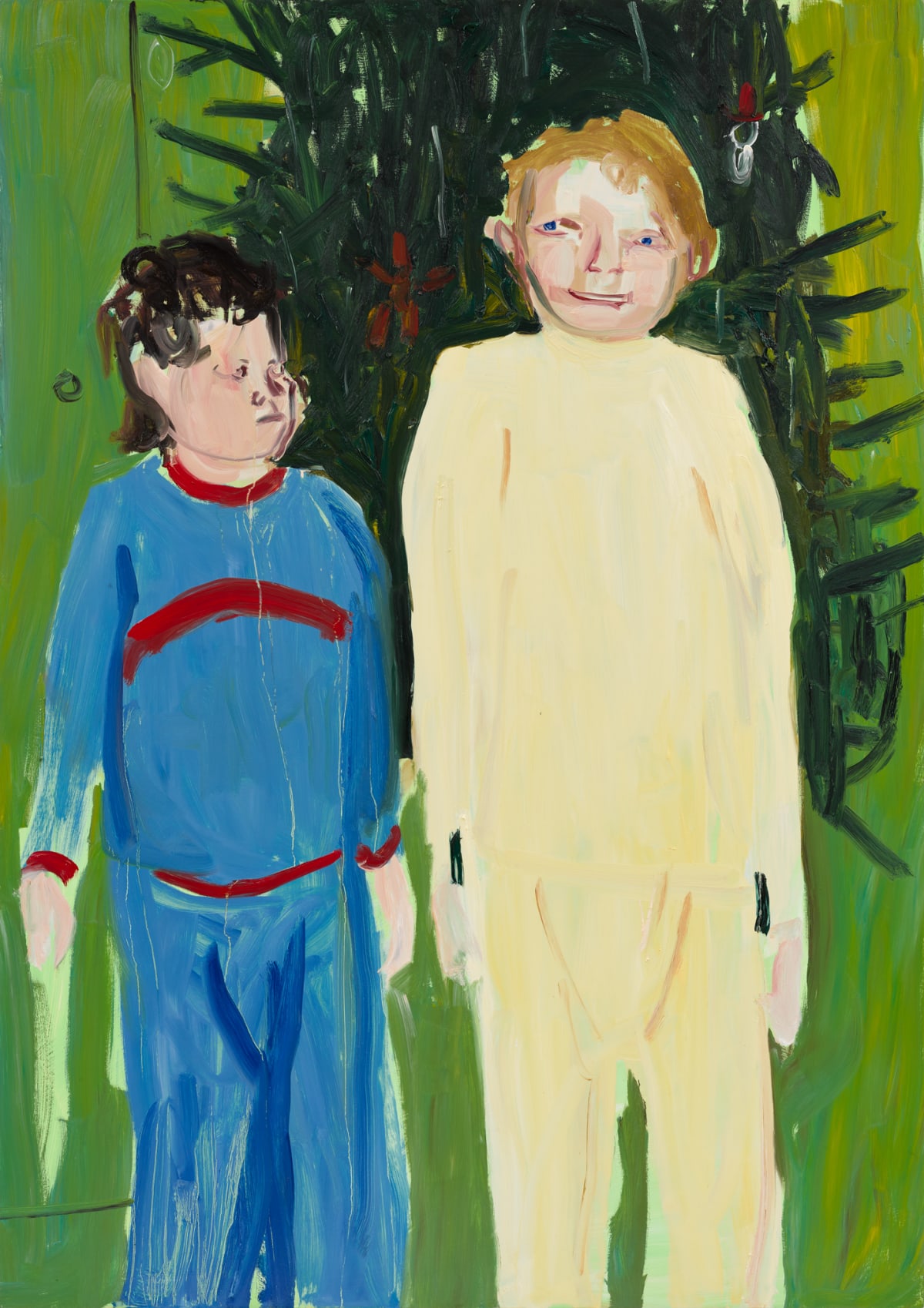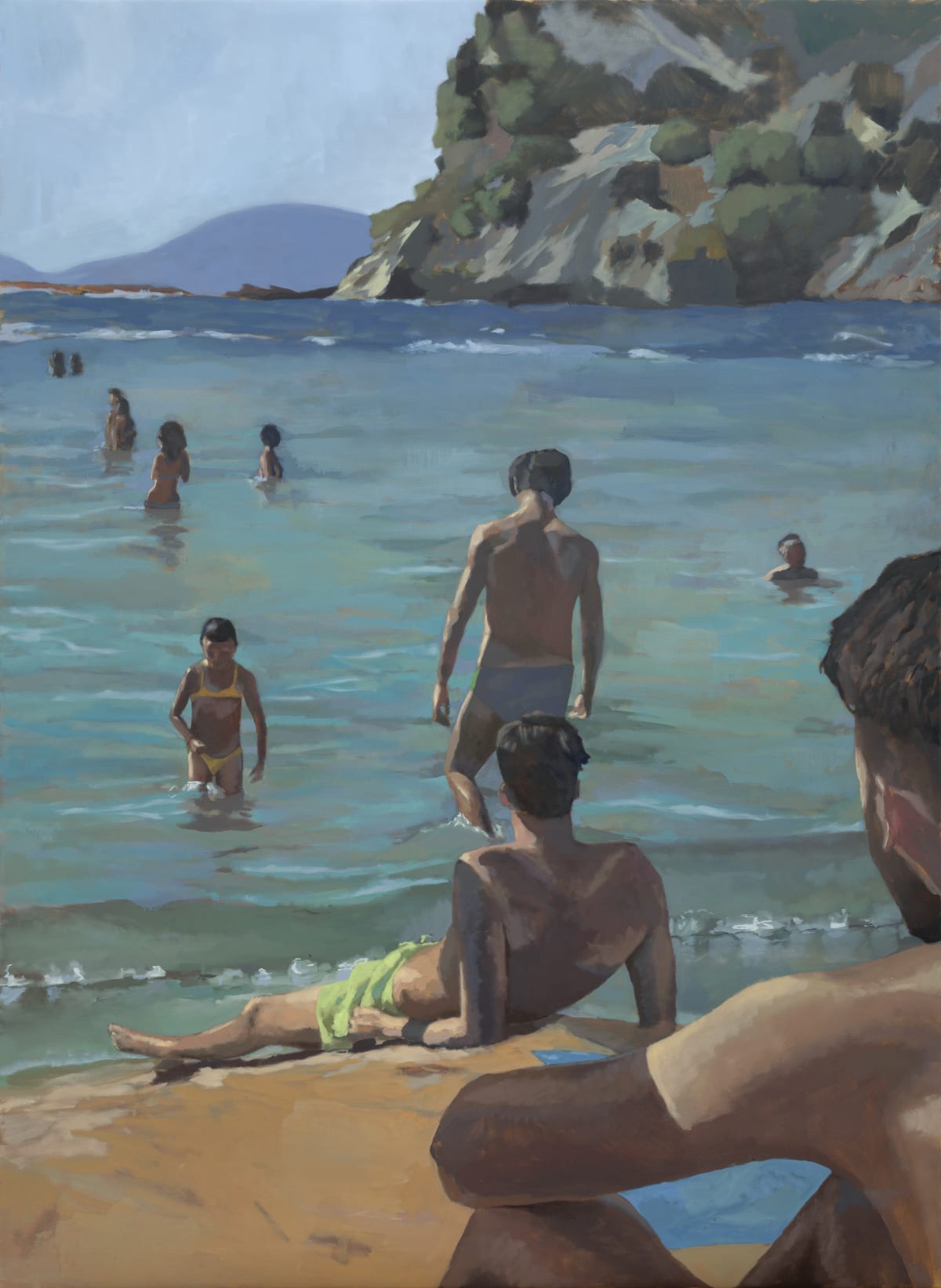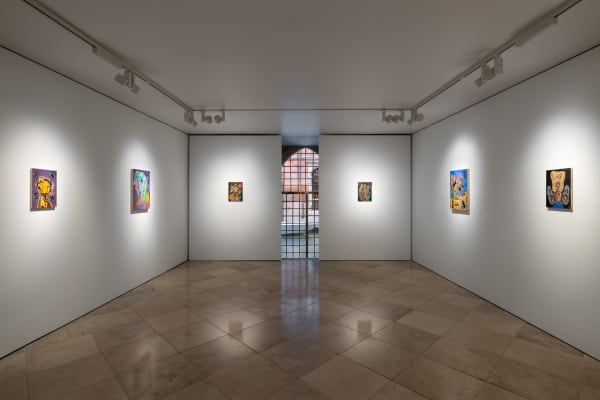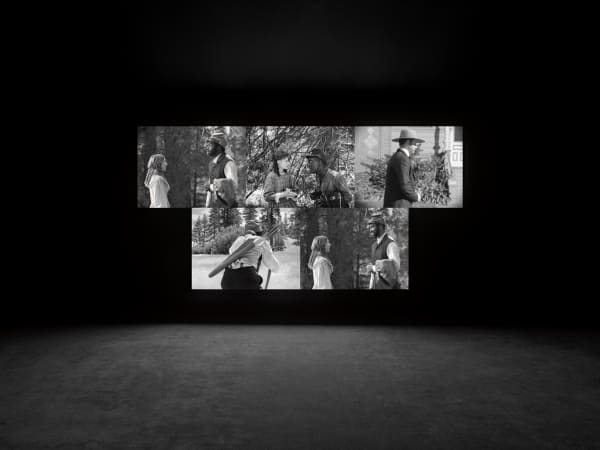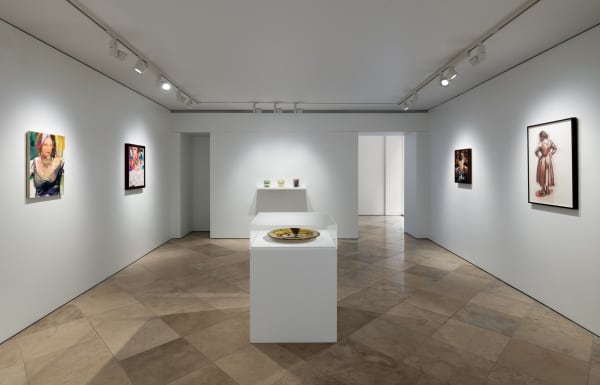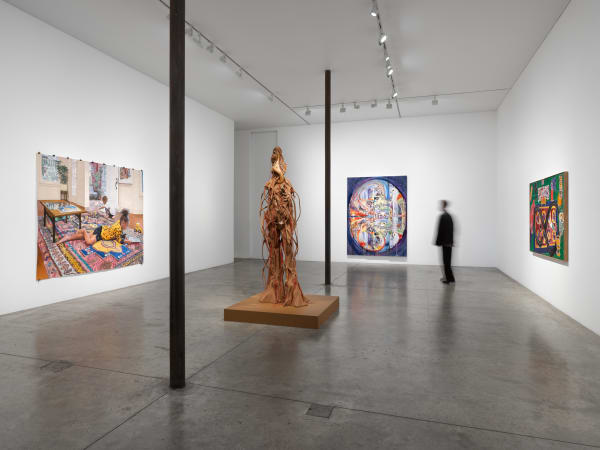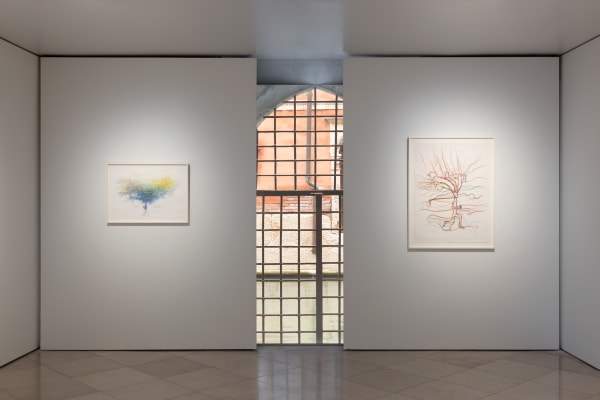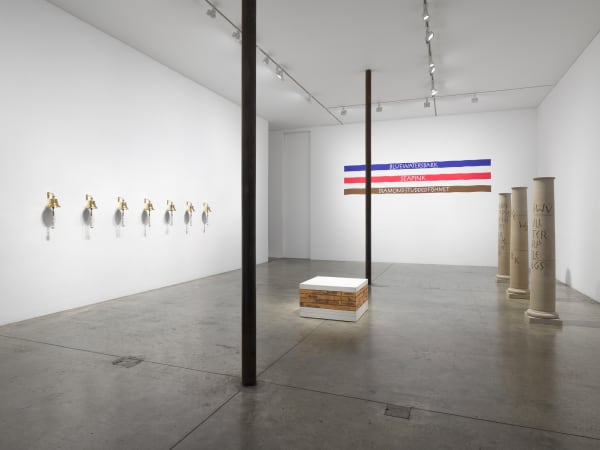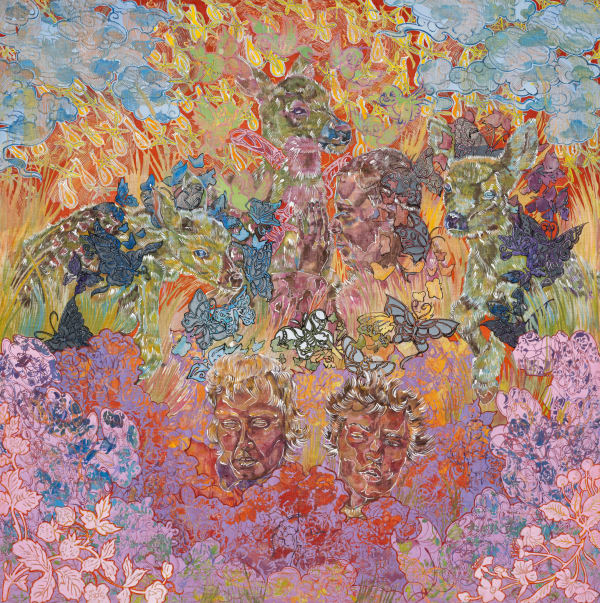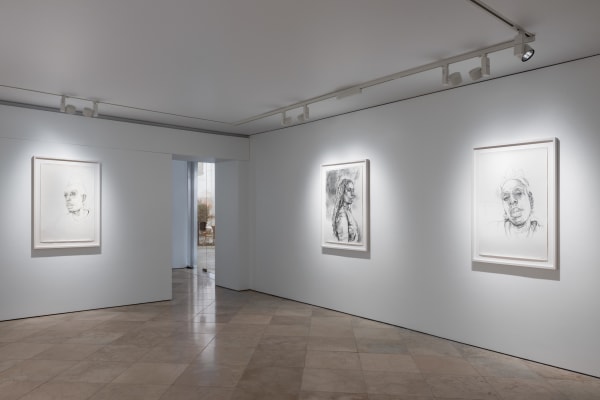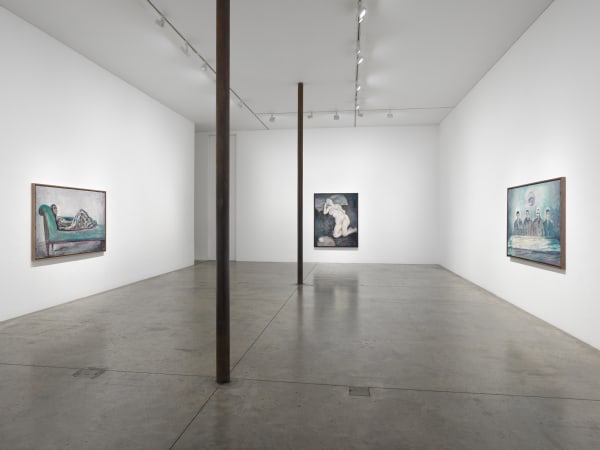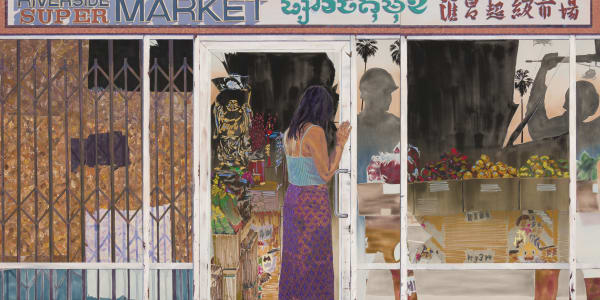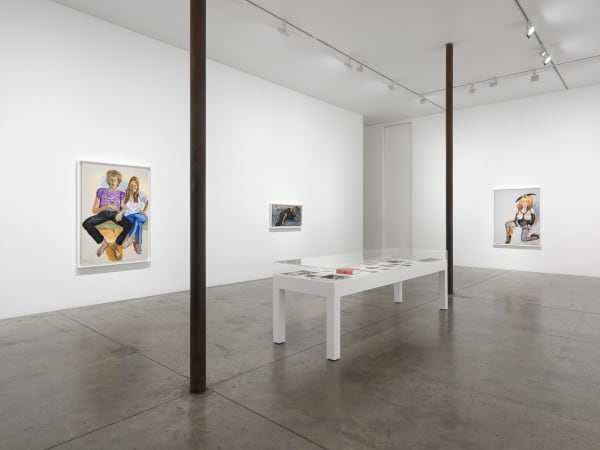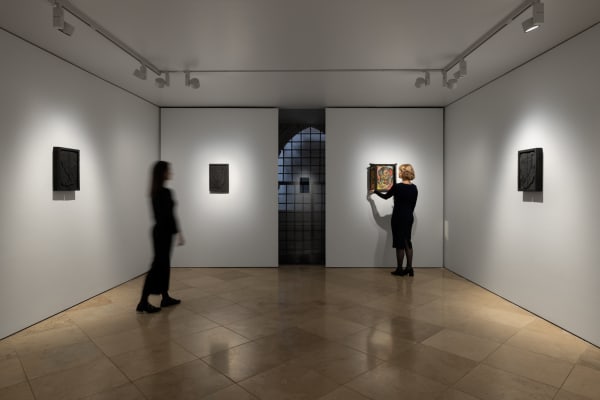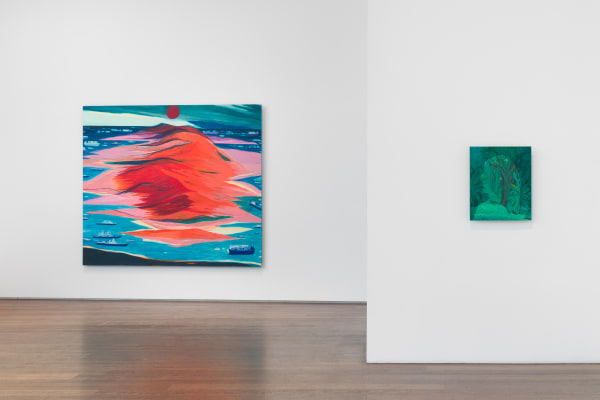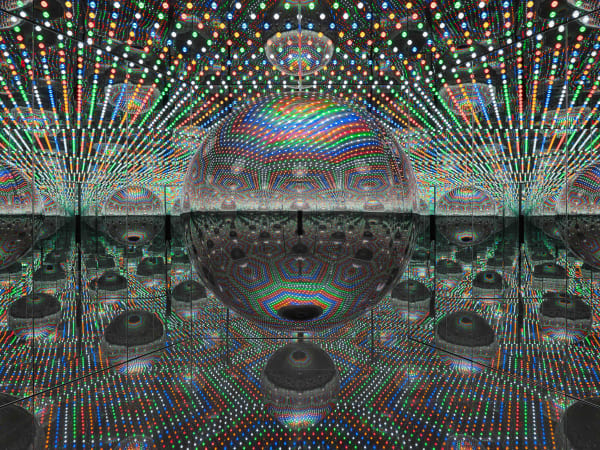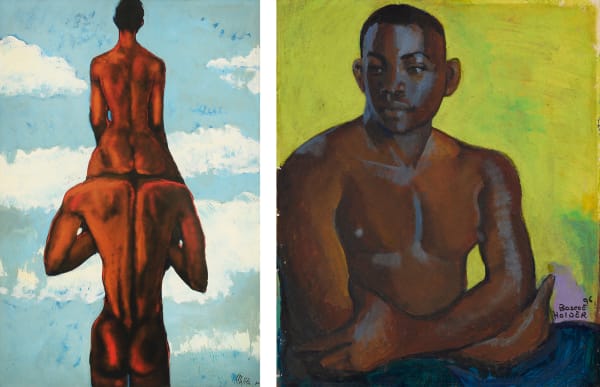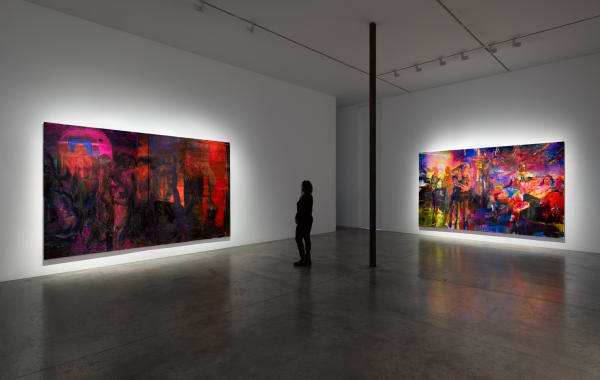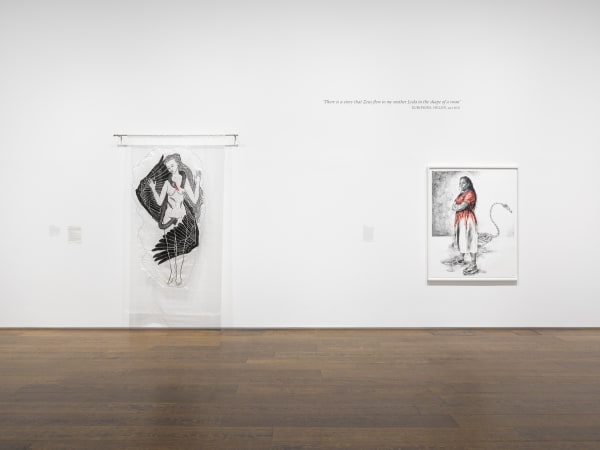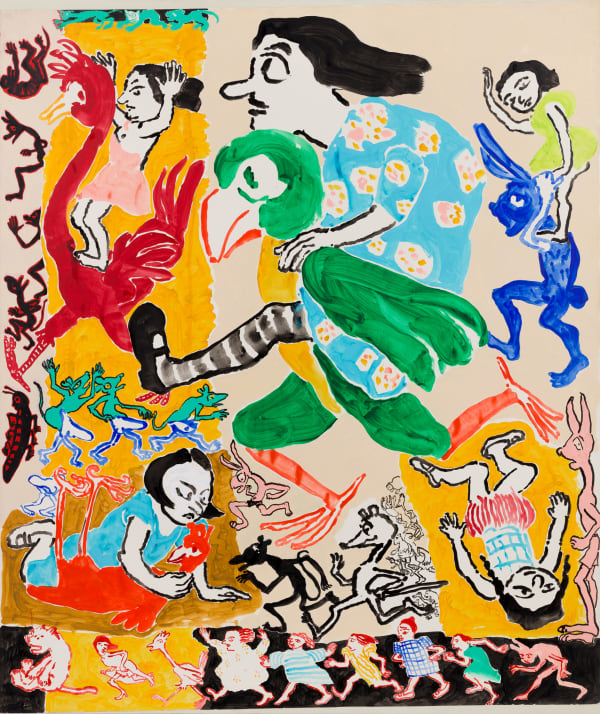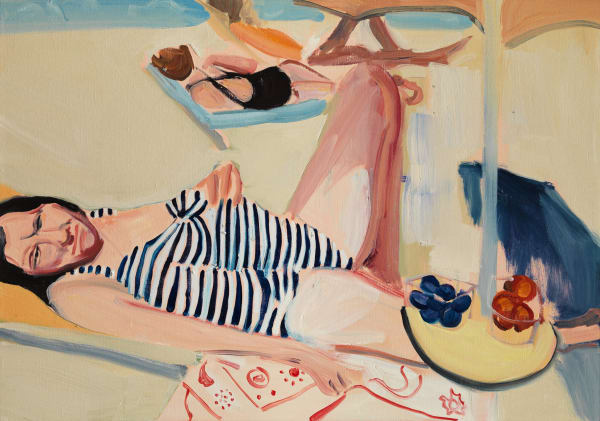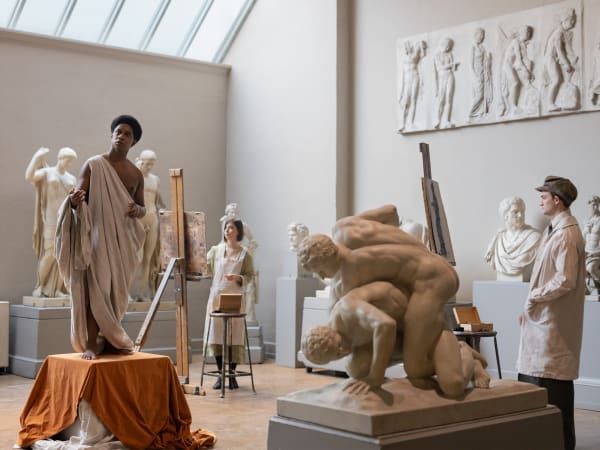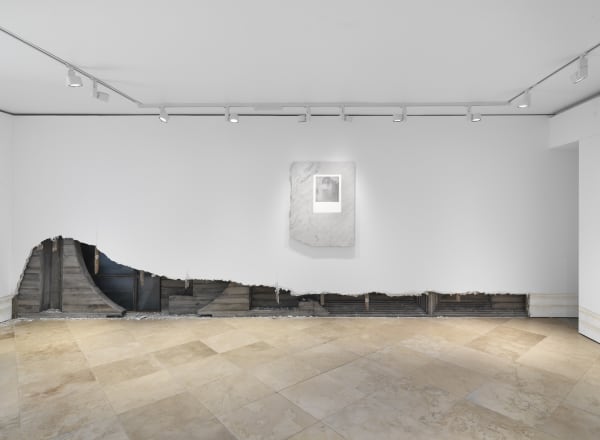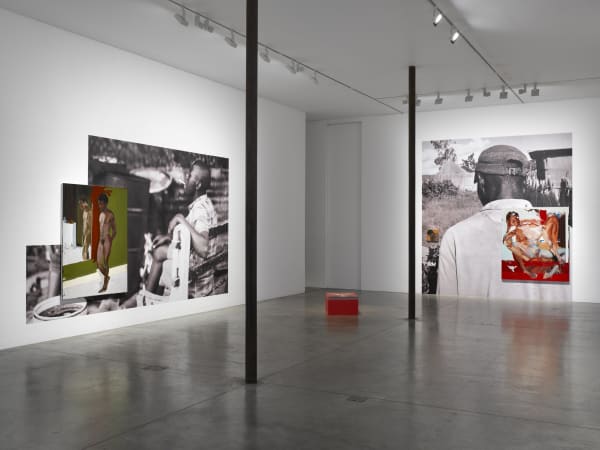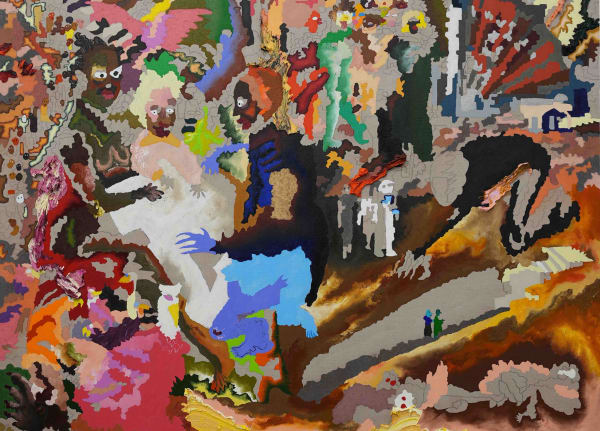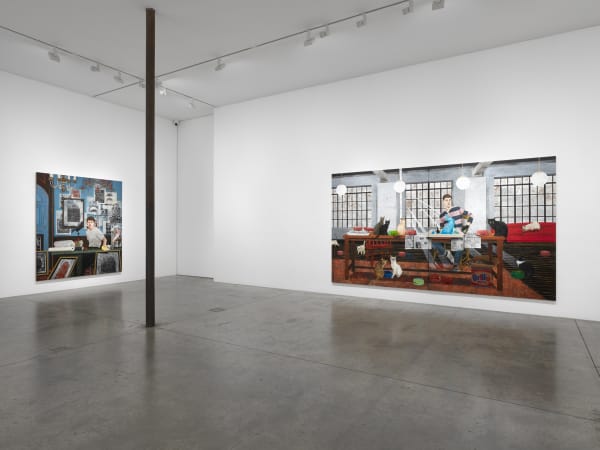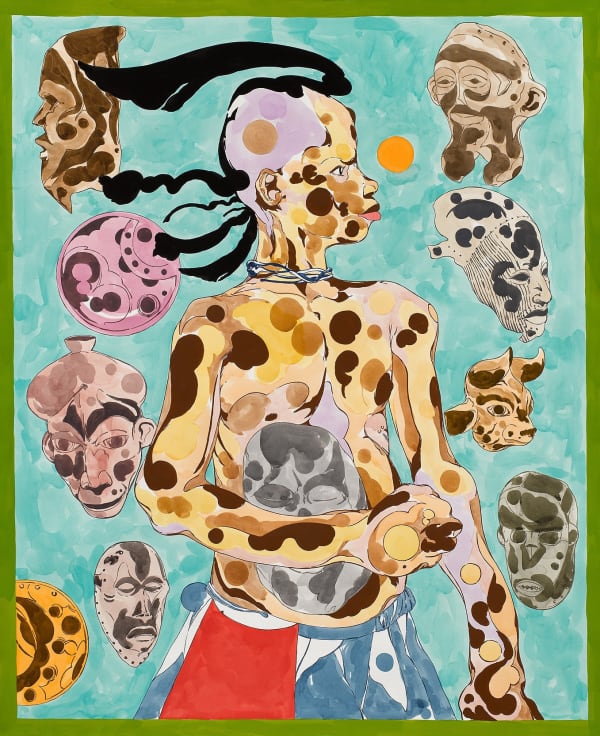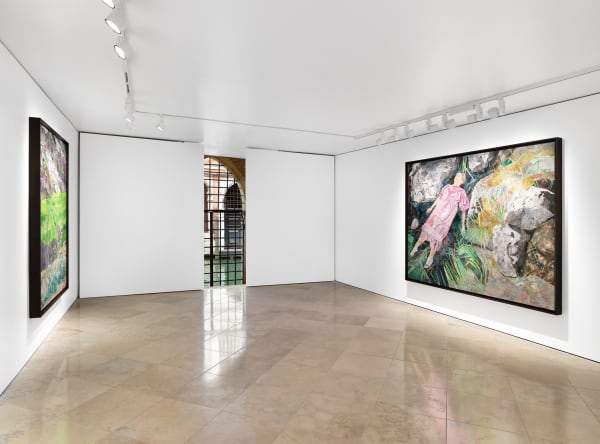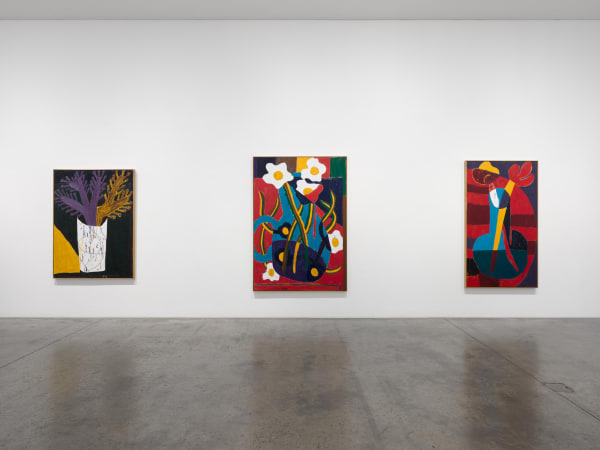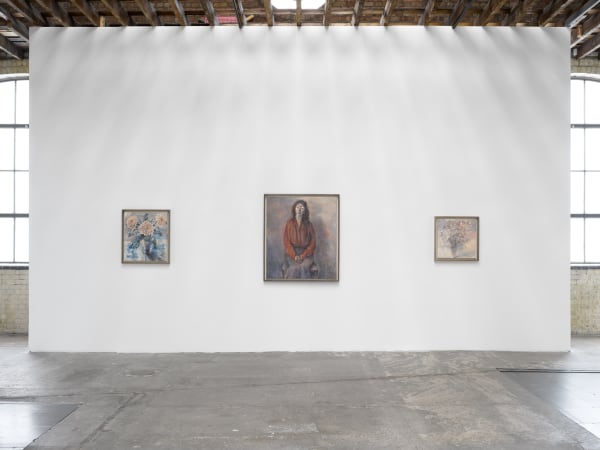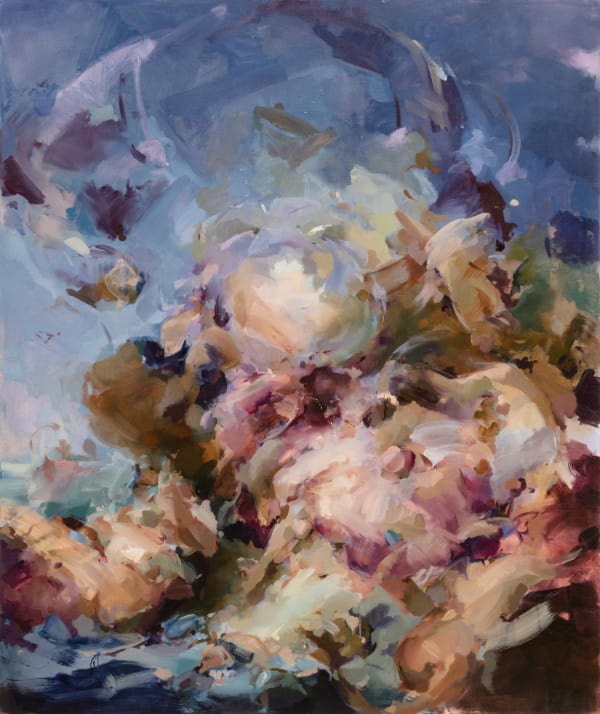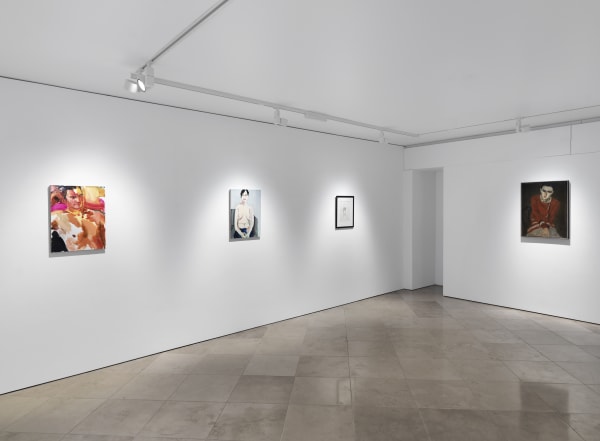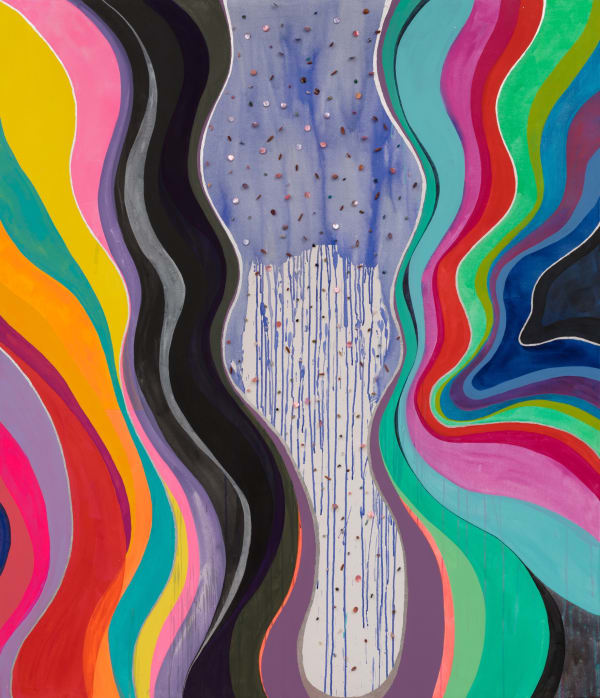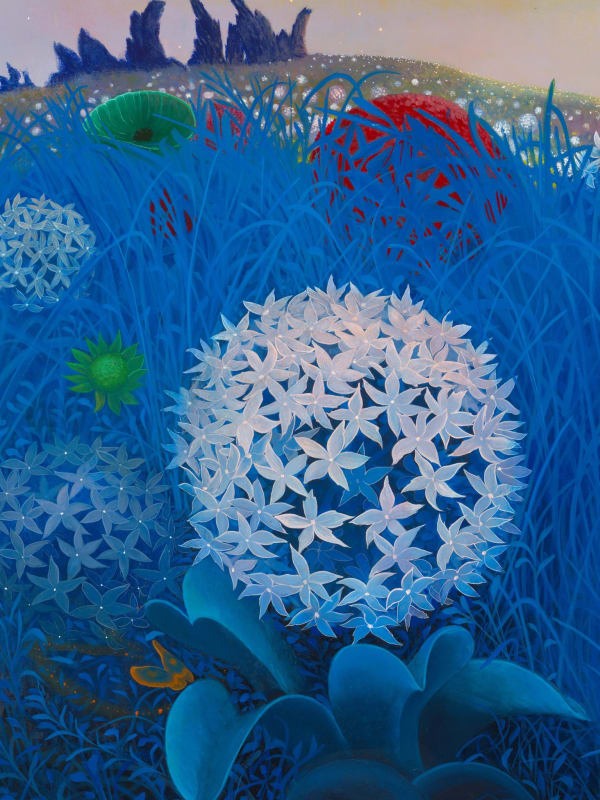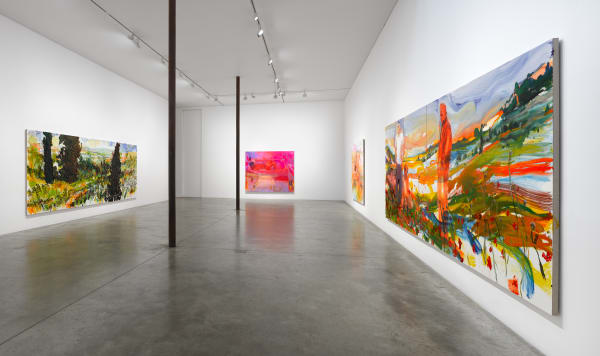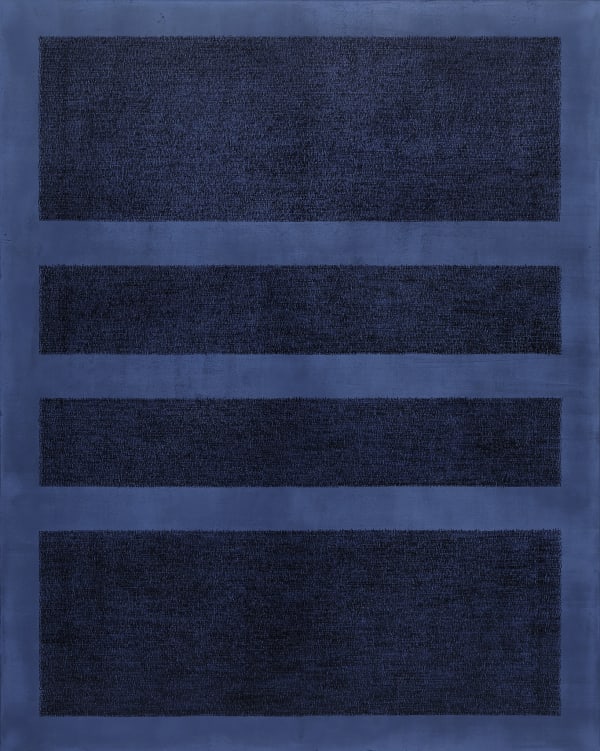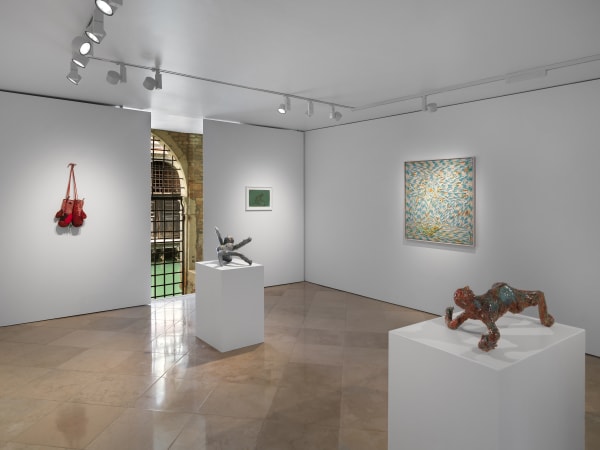Current
-

Chantal Joffe: I Remember
14 November 2025 – 17 January 2026 London Gallery I The exhibition takes its title from Joe Brainard’s iconic memoir and is inspired by the late American writer’s poetic prompts that evoke the atmosphere and time of memories. Joffe’s paintings attempt to capture the fleeting yet enduring nature of memory and how it shapes our sense of self. Learn More -

The Stories We Tell: Tidawhitney Lek, Emil Sands, Khalif Tahir Thompson
14 November 2025 – 17 January 2026 London Gallery II, Miro Presents The first significant introduction of three emerging artists, all born in the 1990s, to a London audience. Learn More
Upcoming
-

Isaac Julien: All That Changes You. Metamorphosis
13 February – 21 March 2026 London Gallery I The world premiere of the five-screen installation of Isaac Julien’s acclaimed film installation All That Changes You. Metamorphosis, accompanied by new photographic works.
Learn More -

Emil Sands: Watchmen
3 February – 7 March 2026 Miro Presents, Venice New paintings and works on paper by Emil Sands completed during a recent residency with the gallery in Venice. Learn More
Past
-

Richard Ayodeji Ikhide: Incroci del Passato (Crossroads of the Past)
1 November – 13 December 2025 Miro Presents, Venice An exhibition of new tempera paintings Ikhide began during a residency with the gallery in Venice in spring 2025. Working in egg tempera on panel for the first time, he seeks to bridge artistic traditions ranging from the devotional paintings of the Italian Renaissance to the ritual objects and ancestral knowledge of his Nigerian heritage. Learn More -

Kudzanai-Violet Hwami: Incantations
26 September – 1 November 2025 London Gallery II New paintings by Kudzanai-Violet Hwami, including works from the artist’s acclaimed Atom series. Learn More -

Stan Douglas: Birth of a Nation and The Enemy of All Mankind
26 September – 1 November 2025 London Gallery I Stan Douglas’ sixth solo exhibition with the gallery features the European premiere of his multi-channel video installation, Birth of a Nation, and works from a new photographic series, The Enemy of All Mankind: Nine Scenes from John Gay’s Polly. Learn More -

John Kørner: Venice Lido Light
13 September – 25 October 2025 Venice New painting and sculpture by John Kørner commenced during a residency with the gallery in Venice. Learn More -

Victoria Miro Projects – Talia Levitt: 24/7
3 September – 19 October 2025 Miro Presents This new body of work reflects New York-based artist Talia Levitt’s joyful, chaotic and creatively charged experience of becoming a mother while carrying forward cultural and familial traditions — a contemplation of life and the cyclical nature of time. Learn More -

Victoria Miro: 40 Years
4 July – 6 September 2025 Venice Continuing the gallery’s 40th anniversary celebrations, Victoria Miro presents an exhibition of some of the many gallery artists who have had a special connection to the city of Venice. Learn More -

Victoria Miro: 40 Years
6 June – 1 August 2025 London Gallery I , London Gallery II This special exhibition celebrates the extraordinary artists who have shaped the gallery since its founding in 1985. Learn More -

Do Ho Suh: Breathing Home | Recent Drawings
10 May – 28 June 2025 Venice Highlighting the foundational role and varied forms that drawing plays in Suh’s art, the exhibition features a range of his works on paper, including drawings completed in graphite, watercolour and pigment marker, as well as his unique ‘thread’ drawings, all completed over the past year. Learn More -

Ian Hamilton Finlay: Fragments
30 April – 24 May 2025 London Gallery I Fragments is both a major new book and eight exhibitions that will take place internationally during May 2025 in Basel, Brescia, Edinburgh, Hamburg, London, New York, Palma de Mallorca and Vienna, curated and edited by Pia Maria Simig. Learn More -

Victoria Miro Projects – Giuditta Branconi: Fragile
25 April – 30 May 2025 Miro Presents In her latest body of work, Branconi focuses on the male figure, offering a nuanced portrayal of masculinity. Fragile invites viewers to reflect on contemporary notions of gender, strength and vulnerability through a lens of tenderness and introspection. Learn More -

Barbara Walker: Any Time, Any Place, Any Where
22 March – 3 May 2025 Miro Presents, Venice Completed during a recent residency with the gallery in Venice, this new body of work features self-portraits created in dialogue with Old Masters and the experience of being an anonymous figure immersed in the city. Learn More -

Celia Paul: Colony of Ghosts
14 March – 17 April 2025 London Gallery I Colony of Ghosts coincides with the launch of a major new monograph, published by MACK in March 2025, spanning some fifty years of painting by the artist.
Learn More -

Inka Essenhigh: The Greenhouse
14 March – 17 April 2025 London Gallery II The New York-based artist’s sixth solo exhibition with the gallery comprises a body of work completed during the past year, featuring botanical, landscape and figurative motifs poised between an exuberant exterior world and an energetic interior consciousness. Learn More -

Victoria Miro Projects – Tidawhitney Lek: Marooned on Foreign Feelings
14 February – 31 March 2025 Miro Presents Marooned on Foreign Feelings is an exhibition of new work by LA-based artist Tidawhitney Lek. This is the eighth project in an ongoing series of presentations by invited international artists on Vortic. Learn More -

Saskia Colwell: Skin on Skin
1 February – 15 March 2025 Venice The interplay between the softness of charcoal and the organic quality of vellum creates a close connection to the human body in images which question norms surrounding female representation and contemporary issues of censorship and agency. Learn More -

Chiaroscuro: A Century of Charcoal
1 February – 1 March 2025 London Gallery II, Miro Presents, Venice On view in a specially designed gallery on Vortic.art, with selected works at Victoria Miro, London and Venice, the exhibition brings together works by over 30 artists made over the past 100 years. The charcoal drawings range from preparatory sketches to fully realised, monumental works. Learn More -

At Home: Alice Neel in the Queer World
30 January – 8 March 2025 London Gallery I This exhibition highlights the artist’s career-long commitment to depicting the human condition and her practice of painting people from many walks of life, focusing on her paintings of people from queer communities and those who were a part of their circle. Learn More -

María Berrío: The End of Ritual
21 November 2024 – 18 January 2025 London Gallery I The End of Ritual depicts moments of disquiet articulated within densely populated interiors, spaces where the old world meets the new and a restless dynamic unfolds between performers and spectators in and out of the frame. The exhibition is accompanied by a publication featuring new writing on the artist by... Learn More -

Motion in Stillness: Dance and the Human Body in Movement
21 November 2024 – 18 January 2025 London Gallery II, Miro Presents Presented by Vortic and Victoria Miro, Motion in Stillness: Dance and the Human Body in Movement presents works by artists who all have a relationship with dance or with the human body in movement. Learn More -

Chris Ofili: Joyful Sorrow
26 October – 14 December 2024 Venice Joyful Sorrow is a two-site exhibition in Paris and Venice of the acclaimed British painter Chris Ofili’s newest body of work that continues his exploration of Shakespeare’s Othello. Learn More -

Jules de Balincourt: Moving Landscapes
4 October – 2 November 2024 London Gallery II In this new body of work, the Brooklyn-based artist continues his exploration of painting as an intuitive process, resulting in fantasy-like worlds in which landscapes and seascapes become sites of possibility and escape. Learn More -

Yayoi Kusama: EVERY DAY I PRAY FOR LOVE
25 September – 2 November 2024 London Gallery I Victoria Miro is delighted to announce Yayoi Kusama’s fourteenth solo exhibition with the gallery, which premieres a new Infinity Mirror Room and introduces works from a new series of paintings.
Learn More -

Victoria Miro Projects – Konstantina Krikzoni: Nymphidia
19 September – 10 November 2024 Miro Presents Nymphidia is a presentation on Vortic by London-based artist Konstantina Krikzoni. This is the seventh project in an ongoing series of presentations by invited artists on Vortic. Learn More -

Maria Nepomuceno: Expiro
14 September – 12 October 2024 Venice The title of the exhibition is derived from a work by the artist of the same name: Expiro, a Portuguese word chosen for its similarity, in sound and meaning, to the Italian espiro, to exhale, which in turn relates to the traditional glassblowing techniques used for the first time by the artist in the creation of these works. Learn More -

Eric Fischl: Bathers
29 June – 17 August 2024 Miro Presents, Venice Created as part of Vortic Artists Projects, Bathers is Eric Fischl’s first exhibition at Victoria Miro Venice and brings together painted bronze reliefs derived from virtual paintings. Learn More -

Victoria Miro Projects – Jemima Murphy: Finding June
7 June – 16 August 2024 Miro Presents An online presentation by London-based artist Jemima Murphy. This is the sixth project in an ongoing series of presentations by invited international artists on Vortic. Learn More -

Boscoe Holder | Geoffrey Holder
1 June – 27 July 2024 London Gallery II On view across the two spaces of our London gallery, these exhibitions consider for the first time the siblings as painters in parallel. Learn More -

Sarah Sze
16 April – 16 June 2024 Venice The artist’s sixth exhibition with Victoria Miro marks a return to Venice for Sze, who featured in the 1999 and 2015 Biennales and represented the United States with her exhibition Triple Point in the 2013 Biennale. Learn More -

Secundino Hernández: Problematic Corners
10 April – 18 May 2024 London Gallery I The Spanish artist’s fifth solo exhibition with the gallery features a dynamic series of oval works that expand on his unique painting language. Learn More -

Doron Langberg: Flowers
3 February – 30 March 2024 Venice The works on view in Venice were painted en plein air at different times of the year. Langberg paints these fleeting moments spontaneously in one session, alighting on patches of ground and recording them in bursts of activity. Learn More -

Doron Langberg: Night
26 January – 28 March 2024 London Gallery I Featuring large-scale tableaux of nightclubs and beach scenes, Night is a hymn to nocturnal worlds both interior and exterior, and the spaces of ambiguity, opportunity and liberation – physical and psychological – that open up after dark. Learn More -

LEDA and the SWAN: a myth of creation and destruction
1 December 2023 – 13 January 2024 London Gallery II, Miro Presents Curated by Minna Moore Ede and presented by Vortic Curated and Victoria Miro, an exhibition of primarily new work by sixteen artists across a variety of media – drawing, painting, sculpture, film and dance. Their responses to the myth of Leda and the Swan are diverse; each has found their... Learn More -

Stephen Willats: TIME TUMBLER
22 November 2023 – 13 January 2024 London Gallery I Victoria Miro is delighted to present an exhibition by pioneering British conceptual artist Stephen Willats on the occasion of his eightieth birthday. Bringing together new works and seminal examples from the 1970s, Time Tumbler , curated with Jelena Kristic, charts developments in the artist’s singular language, reveals the constancy of... Learn More -

Victoria Miro Projects – Tainan Cabral: Medley
22 November 2023 – 20 January 2024 Miro Presents Victoria Miro Projects is delighted to present an online exhibition of new paintings by Brazilian artist Tainan Cabral. This is the fifth in an ongoing series of presentations by invited international artists on Vortic. ‘Nothing is entirely abstract. Everything has a feeling that drives this abstraction. But it’s also about... Learn More -

Celia Paul: Myself, Among Others
28 October – 9 December 2023 Venice New paintings completed during a recent residency with the gallery in Venice. The exhibition is accompanied by a new text by Eleanor Nairne. Learn More -

Ali Banisadr: The Changing Past
11 October – 11 November 2023 London Gallery II The first solo presentation of works by the New York-based artist since he joined the gallery in 2021 features a substantial body of paintings completed over the past two years. Learn More -

Paula Rego: Letting Loose
22 September – 11 November 2023 London Gallery I An exhibition of works from the 1980s, a period of liberation and self-discovery that led to great breakthroughs for the artist and saw her first major exhibitions in the UK and the US. Learn More -

Chantal Joffe: The Eel
5 September – 21 October 2023 Venice An exhibition of new paintings completed this summer during a residency with the gallery in Venice. Learn More -

Tal R: How to Count to Tree
1 July – 26 August 2023 Venice Victoria Miro is delighted to present How to Count to Tree , an exhibition in Venice of new paintings by Tal R. Tal R often employs apparently simple compositional devices and motifs from everyday life to create complex, atmospheric worlds that, beginning with the recognisable and known, expand or collapse... Learn More -

Howardena Pindell: New Works
8 June – 29 July 2023 London Gallery II Victoria Miro is delighted to present an exhibition of new spray dot paintings by Howardena Pindell. Howardena Pindell’s spray dot paintings are among her most iconic works. The artist first created these sensuous paintings in New York in the early 1970s. Using various hole punchers and tools, she punched into... Learn More -

Chris Ofili: The Seven Deadly Sins
2 June – 29 July 2023 London Gallery I Victoria Miro is delighted to present The Seven Deadly Sins , a major new series of paintings by Chris Ofili. Completed over the past six years, the works on view offer an expansive meditation on sin and the complex experience of sinfulness. Learn More -

Isaac Julien: Once Again… (Statues Never Die) – Photographs
2 May – 4 June 2023 London Gallery II Victoria Miro is delighted to present an exhibition of newly conceived photographic works by Isaac Julien, focusing on his latest work, Once Again… (Statues Never Die) . Once Again… (Statues Never Die) is an immersive five-screen installation by artist and filmmaker Sir Isaac Julien. Commissioned by the Barnes Foundation in... Learn More -

Victoria Miro Projects – Emma Talbot: Magical Thinking
27 April – 16 June 2023 Miro Presents Victoria Miro Projects is delighted to present Magical Thinking , an online exhibition of new paintings by Emma Talbot. This is the fourth in an ongoing series of presentations by invited international artists on Vortic. Emma Talbot is acclaimed for work that confronts some of the most urgent questions of... Learn More -

Alex Hartley: Closer Than Before
22 April – 17 June 2023 Venice The first site-specific installation at Victoria Miro Venice features a dynamic architectural intervention that transforms part of the gallery, providing context for new wall-mounted works that continue the artist’s interest in layering, materiality, illusion and how art questions our relationship to time. Learn More -

Kudzanai-Violet Hwami: A Making of Ghosts
14 April – 20 May 2023 London Gallery I Victoria Miro is delighted to present an exhibition of new work by Kudzanai-Violet Hwami. Comprising paintings in dialogue with large-scale wall-based and suspended photographic images, A Making of Ghosts reflects on aspects of grief and the action of memory, unfolding as the viewer moves through the gallery space. Learn More -

Grayson Perry
11 February – 2 April 2023 Venice Two exhibitions by Grayson Perry in London and Venice. The Venice exhibition features ceramics and works in silver and bronze, and works on paper including collages and a new etching. Learn More -

Victoria Miro Projects – Cindy Phenix: The Interchange of Substance was Fascinating
9 February – 31 March 2023 Miro Presents Victoria Miro Projects is delighted to launch an online presentation by Los Angeles-based artist Cindy Phenix. This is the third project in an ongoing series of occasional presentations by invited international artists on Vortic. Learn More -

Grayson Perry: Posh Cloths
3 February – 25 March 2023 Victoria Miro London Two exhibitions by Grayson Perry in London and Venice. In London, a selection of textile works from the past eight years, including new tapestries, will be on view. Learn More -

Hernan Bas: The Conceptualists
18 November 2022 – 21 January 2023 London Gallery I While earlier paintings hinge on characters with nascent identities and burgeoning interests, the works in this exhibition follow a new theme, in which Bas’ protagonists engage in a variety of obsessive pursuits that, deemed strange under everyday circumstances, might be rationalised or even championed when considered as ‘conceptual art’. Learn More -

Victoria Miro Projects – Richard Ayodeji Ikhide: Acts of Creation
9 November 2022 – 18 January 2023 Miro Presents Victoria Miro Projects is delighted to launch an online presentation by Richard Ayodeji Ikhide, featuring a new series of paintings by the London based Nigerian artist. This is the second project in an ongoing series of occasional presentations by invited international artists on Vortic. Learn More -

Hedda Sterne: Metamorphoses
5 November – 10 December 2022 Venice This exhibition features works drawn from the late 1960s and early 1970s, including important paintings from 1967 created by pouring thinned acrylic paint on to raw canvas. Learn More -

Alice Neel: There’s Still Another I See
11 October – 12 November 2022 London Gallery II This exhibition, the first of its kind, focuses on pairings of paintings by Neel of the same sitter, sometimes completed only a year or two apart, sometimes decades apart. Learn More -

Secundino Hernández: time TIME
11 October – 12 November 2022 London Gallery I New works continue his investigation into the vocabulary of painting and historical classifications of the medium to create images that radiate a sense of urgency. Learn More -

María Berrío: The Land of the Sun
17 September – 29 October 2022 Venice In this new body of work, Berrío conjures an apocalyptic scenario, against which the efforts of her central character become Sisyphean as she journeys through a world of heat and dust. Learn More -

Cubitt 30
16 – 17 September 2022 London Gallery II Victoria Miro is delighted to host a fundraising exhibition that will begin a year-long celebration of Cubitt ’s 30th anniversary. The exhibition will remain on view on Vortic throughout the yea r. For over three decades Cubitt has provided studio space for artists in central London alongside a renowned non-profit... Learn More -

The Story of Art as it’s Still Being Written
8 September – 1 October 2022 London Gallery I Victoria Miro is delighted to present The Story of Art as it’s Still Being Written . This exhibition, curated by Katy Hessel, coincides with the publication of her major new book The Story of Art without Men, published by Hutchinson Heinemann on 8 September 2022 . The Story of Art... Learn More -

Chris Ofili: Harvest
25 June – 10 September 2022 Venice Victoria Miro is delighted to present Harvest , an exhibition in Venice by Chris Ofili. The exhibition debuts a suite of new works that share the title Harvest – Flower Eaters . Completed over the past year in watercolour, charcoal and gold leaf on paper, these works comprise two rectangular... Learn More -

Intimacy
8 June – 30 July 2022 London Gallery II This summer, for the first time, a group exhibition at the gallery in London and a presentation at Art Basel share a common theme. In these works, a number of which have been created especially for the occasion, artists convey aspects of intimacy in its many forms: maternal, erotic, platonic,... Learn More -

Tal R: Untitled Flowers
26 May – 30 July 2022 London Gallery I Victoria Miro is delighted to present Untitled Flowers , an exhibition of new paintings by Tal R. The paintings are complemented by a large-scale installation of drawings. On view in the waterside garden will be a number of recent bronze sculptures by the artist. In his work Tal R often... Learn More -

Paula Rego: Secrets of Faith
23 April – 18 June 2022 Venice Completed in 2002, the works on view depict episodes from the life of the Virgin Mary – subjects familiar in Christian art radically retold by Rego that are among the most special to the artist. Learn More -

John Kørner: Cosmopolitan Super Fruits
8 April – 14 May 2022 London Gallery II Victoria Miro is delighted to present Cosmopolitan Super Fruits , an exhibition by Danish artist John Kørner. Following Intercontinental Super Fruits , John Kørner’s first solo museum exhibition in the United States (on view at the Museum of Contemporary Art Detroit from November 2021 until January 2022), this exhibition builds... Learn More -

Celia Paul: Memory and Desire
6 April – 14 May 2022 London Gallery I This exhibition of new paintings coincides with the publication of Letters to Gwen John, a new Jonathan Cape book by the artist which centres on a series of letters addressed to the painter Gwen John (1876–1939), who has long been a tutelary spirit for Paul. Learn More -

Flora Yukhnovich: Thirst Trap
1 – 26 March 2022 London Gallery I New paintings by the artist draw upon various depictions of the Roman goddess Venus in mythology, art history and contemporary culture. Learn More -

Doug Aitken: Open
15 February – 26 March 2022 Miro Presents Victoria Miro (London), 303 Gallery (New York), Galerie Eva Presenhuber (Zürich), and Regen Projects (Los Angeles) are pleased to announce a joint presentation of the new virtual reality exhibition by Doug Aitken, Open , exclusively on Vortic. Learn More -

Unmasked
12 February – 27 March 2022 Venice An exhibition in Venice of works by Milton Avery, Jules de Balincourt, Hernan Bas, María Berrío, Chantal Joffe, Doron Langberg, Alice Neel and Celia Paul. Learn More -

Victoria Miro Projects: Sarah Cain
28 January – 2 April 2022 Miro Presents Victoria Miro Projects is a dynamic series of online presentations by invited international artists in a specially conceived gallery on Vortic Collect. The inaugural project, Or is it because the problem is beautiful to me, features new works by Los Angeles-based artist Sarah Cain on view until 2 April 2022. Learn More -

Paula Rego: The Forgotten
19 November 2021 – 12 February 2022 Victoria Miro Testament to a career spent exploring hidden narratives and their associated stigmas, The Forgotten encircles themes and subjects that are often masked or concealed – out of politeness or embarrassment – such as mental illness and old age. Learn More -

Inka Essenhigh
6 November – 11 December 2021 Venice Essenhigh’s first exhibition at Victoria Miro Venice will present new paintings from her ongoing series of botanical works in enamel paint, a medium the artist first worked with two decades ago. Learn More -

Sarah Sze
12 October – 6 November 2021 London Gallery II Victoria Miro is delighted to present an exhibition by Sarah Sze. In Sarah Sze’s new paintings, scaled to Victoria Miro’s Gallery II space, the artist incorporates a wealth of painted and collaged elements and traces of multiple image-making mediums, laying bare the narrative of the studio and the developmental arcs... Learn More -

Victoria Miro x OUT Collective
15 September – 31 December 2021 Miro Presents Victoria Miro is delighted to participate in OUT Collective on Vortic with an exhibition of works selected by Kudzanai-Violet Hwami, Doron Langberg and Russell Tovey. Learn More -

Doron Langberg: Give Me Love
3 September – 6 November 2021 London Gallery I For his first exhibition with the gallery, Langberg shows near-abstract large-scale depictions that give material form to moments of desire. Learn More -

Kudzanai-Violet Hwami: When You Need Letters for Your Skin
3 September – 6 November 2021 London Gallery I Victoria Miro is delighted to present When You Need Letters for Your Skin , the gallery’s first solo exhibition of new paintings by Kudzanai-Violet Hwami. Based in the UK, Kudzanai-Violet Hwami was born in Gutu, Zimbabwe and lived in South Africa from the ages of nine to seventeen. Her paintings... Learn More -

Doug Aitken: Microcosmos
15 July – 30 October 2021 Venice Victoria Miro is delighted to present an exhibition in Venice by the celebrated American artist Doug Aitken. Microcosmos features a new series of handmade fabric wall hangings that, engaging with the physical act of making, visually articulate a world that is driven by information and continuously in flux. The exhibition... Learn More -

Chantal Joffe: Story
4 June – 31 July 2021 London Gallery II Accompanied by an artist’s book with a new text by Olivia Laing, Story features paintings of the artist’s mother and considers issues of aging, motherhood and visibility, focusing particularly on the complex relationship between mother and child over time. Learn More -

Yayoi Kusama: I Want Your Tears to Flow with the Words I Wrote
4 June – 31 July 2021 London Gallery I Victoria Miro is delighted to present Yayoi Kusama’s thirteenth solo exhibition with the gallery. This major presentation of new works features a dynamic installation of paintings from Kusama’s iconic My Eternal Soul series, bronze pumpkins and painted soft sculptures. Additionally, a newly realised sculpture, presented within a darkened interior and... Learn More -

Conrad Shawcross: The Measures of Change
19 May – 10 July 2021 Venice Coinciding with the opening of La Biennale di Venezia: The 17th International Architecture Exhibition, The Measures of Change features a number of the artist’s celebrated Fracture sculptures, the debut of a new series of Perimeter Studies sculptures, and prints from a new body of work, Studies for The Patterns of Absence.
Learn More -

Idris Khan: The Seasons Turn
13 April – 15 May 2021 London Gallery I Click here to book your timed reservation slot Victoria Miro is delighted to announce an exhibition of new works by Idris Khan. Conceived of as two distinct installations, each a reflection on aspects of the past year, The Seasons Turn includes a suite of 28 watercolour and oil collaged works... Learn More -

Christian Holstad: Time wounds all heels
10 April – 8 May 2021 Venice Victoria Miro is delighted to present an exhibition in Venice by Christian Holstad. The US artist’s fourth solo exhibition with the gallery, Time wounds all heels features new two- and three-dimensional works in ceramic, crochet, fabric and pencil, and an earlier Eraserhead drawing that acts as a touchstone for this... Learn More -

The Sky was Blue the Sea was Blue and the Boy was Blue
24 February – 30 April 2021 Miro Presents An exhibition of work by 19 artists celebrating the colour blue, available online and on Vortic as part of The London Collective. Learn More -

Reprieve x Vortic
10 December 2020 – 31 January 2021 Miro Presents An online exhibition of works by Hernan Bas, Kudzanai-Violet Hwami, Doron Langberg, Grayson Perry and Paula Rego. Learn More
